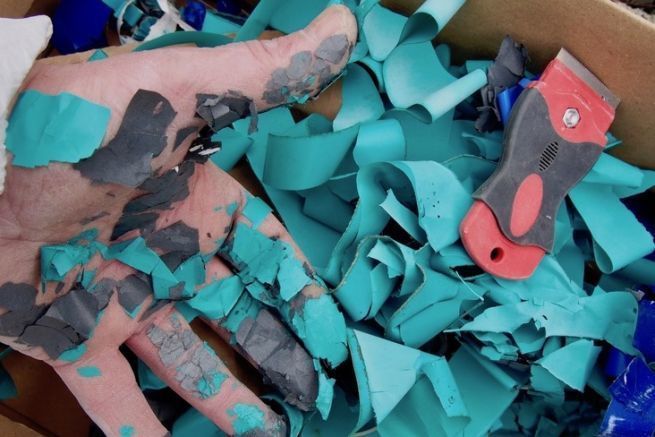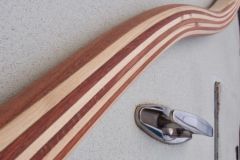Construction sites have widely used adhesives to affix their logo or to visually cut some massive silhouettes. These adhesives are made of a colored film and a glue, which often takes the worst will in the world to separate from the substrate. Choosing a day when the weather is right and using the right tools is a guarantee of success.
In case of replacement
Before you do anything else and if you want to replace these adhesives identically, take pictures and measurements so you can tell the screen printer what you want. The screen printer has cutting tables that work a bit like office printers. At the exit of the machine, the adhesive vinyl strips are trimmed, that is to say that the useless parts are eliminated before the application of an application paper. This one will facilitate the installation by preserving the spacing and the alignment of the elements of decoration or lettering.
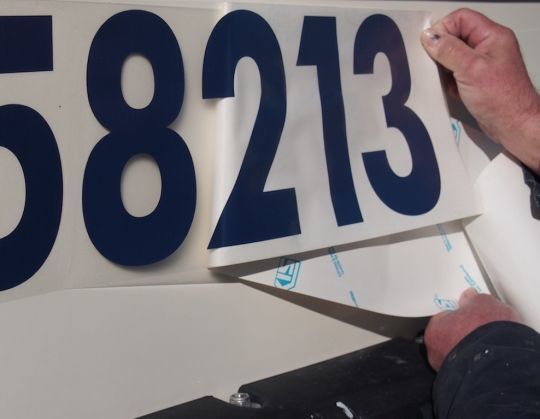
Using the weather
To remove the old adhesives, the best is to take advantage of a day where the sun heats the support, which softens the glue, but not too much to not weaken the vinylâ?¦ A delicate adjustment! Using a sharp scraper, we lift a corner of the vinyl and try to remove it without breaking it. The ideal is to remove the glue at the same time as the plastic film, without it tearing.
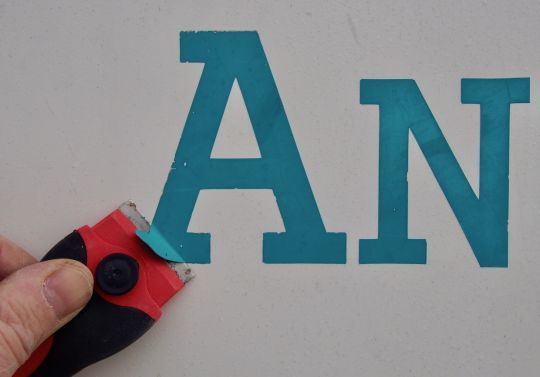
Collecting waste
This can be more or less painful depending on the adhesive, its composition, its degree of wear and especially the ambient temperature! This is really the most important point. You can use a heat gun that is not too hot, or a hair dryer to facilitate the removal. In windy countries, and especially if you work near water, you should keep a bucket handy to deposit the fruit of your labor before it flies away.
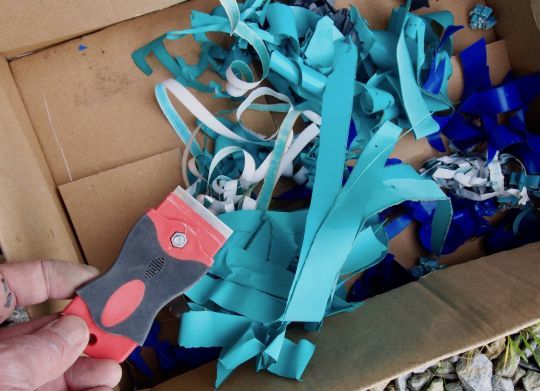
A school of patience
Beware of the scraper that would soon scratch the gelcoat. Do not hesitate to replace a chipped blade as often as necessary. This work is a school of patience and a beautiful gymnastics of the fingers, which must be at the same time skilful and muscular!
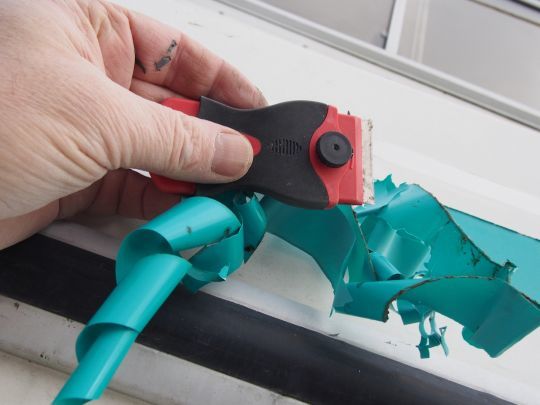
Get rid of the glue!
Once all the vinyl has been removed, we have to clean the film of glue that has remained on the substrate. We work in two steps. A rag soaked in acetone softens the glue that we pick up with the scraper blade. The residues are wiped off with a clean cloth, also soaked in acetone. Once again, the bucket or the garbage can will be used to prevent your rags from flying away.
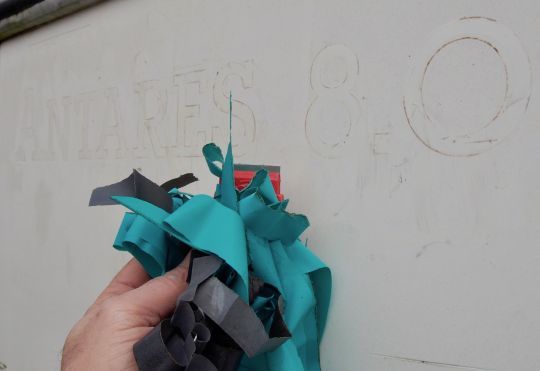
The gum disc
There is another technique, mostly used by car body shops: the rubber disk. A rotating disc heats the adhesive and glue and drives them off the substrate. It is sometimes spectacular, but the efficiency depends on the type of adhesive. You need quality discs and a machine capable of driving them at less than 4000 rpm.
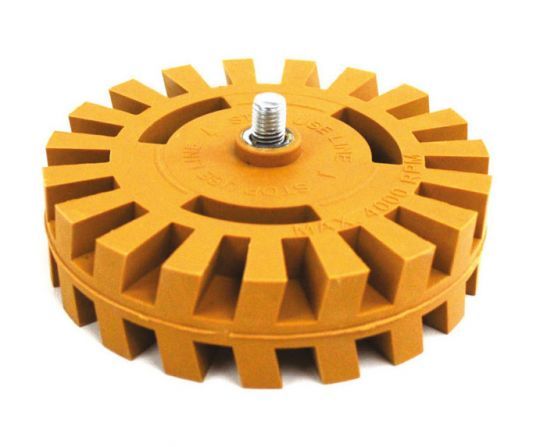
The areas exposed by the removal of the adhesives have a brighter, less discolored surface than the rest of the boat. A very fine sanding with water and a polishing will allow to unify the color and the brightness of the gelcoat .
